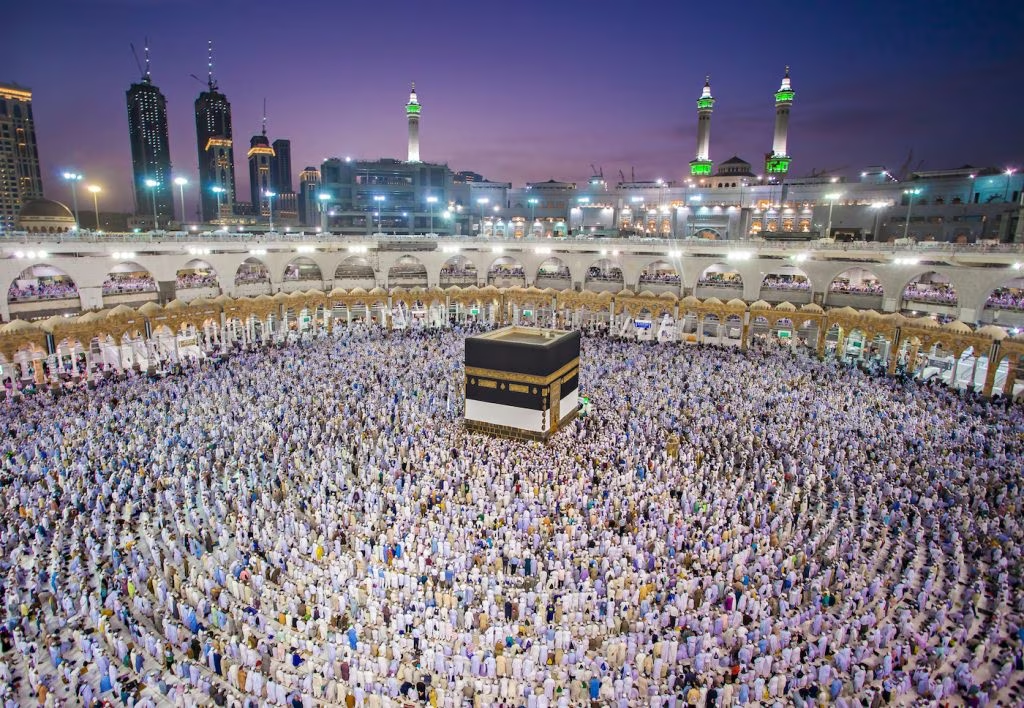This might be the extent of a typical individual’s comprehension of hajj, if they even know about it. However, hajj is a significant component of the five pillars of islam, involving more than just walking around the kaaba.
The term hajj is used for various pilgrims, but in islam, it specifically refers to a spiritual journey to makkah and surrounding areas in saudi arabia during lunar month of Dhul Hijjah. The islamic calendar has 12 months just like the Gregorian calendar, but the months are shorter, resulting in the dates of Dhul Hijjah changing every year.
To perform hajj successfully, one must adhere to various specifics, guidelines, and standards, with the most essential factor being a genuine intention. Engaging in hajj is not just an essential religious obligation but also a way to strengthen a muslim’s faith in Allah and purify their soul There are some important facts of hajj that everybody must know:
Origin of Hajj
Hajj originated in 2000 BC when prophet Ibrahim (AS) followed Allah SWT’s orders to leave his wife Hazrat Hajra (RA) and his only son prophet Ismail (AS) in the desert. To discover food and water for her hungry son, Hazrat Hajra (RA) hurried back and forth between the mountains Safa and Marwa, resulting in the miraculous emergence of Zamzam sprouting from the ground. After a few years, prophet Ibrahim (AS) came back to Makkah with his wife and son. After a while, Allah gave an order to Ibrahim in his dream to sacrifice his son.
In spite of its challenges, both prophet Ibrahim (AS) and his son prophet Ismail (AS) followed Allah’s order respectfully. He took his son into the mountain to make a sacrifice, but Allah (SWT) miraculously switched prophet Ismail (AS) with a sheep. After that, every year all Muslims across the world make sacrifices of goat or lamb on the day of Eid ul-Adha as a Sunnah of prophet Ibrahim (AS).
Later on, Allah ordered Ibrahim to construct the holy Kaaba (house of god). Once he completed the task, Prophet Ibrahim was then told by Allah to gather the people and show them how to perform the hajj.
Pillar of Islam
The Hajj, fifth tenet of Islam, is a divine trip that every Muslim must make in their lifetime. It happens every year in Makkah, in the Islamic month of Dhul-Hijjah. It is a highly significant worship practice since many Muslims gather together for this religious duty, which forges powerful connections of spiritual development, modesty, and solidarity throughout the world. Believers seek forgiveness, purification, and a restored relationship with Allah during the hajj.
The largest religious congregation globally
One of the largest crowds of people occurs during the hajj. In 2019, roughly 2.5 million pilgrims made the journey to the holy Kaaba for hajj, compared to 1.83 million Muslim visitors in 2024. The hajj is a religious practice in Islam that brings together Muslims from various countries like Pakistan, England, Malaysia, and America, uniting them in their devotion to Allah (SWT).
Unique dress code of hajj (known as Ihram)
For the hajj process to be completed, both men and women must wear ihrams. Two white, unstitched pieces of cloth, one for the shoulders and one for the lower body, make up a man’s ihram. Alternatively, women should wear plain attire that covers their body and a head when in Ihram.
Both women and men prepare themselves by cleaning before getting ready for Hajj. Men cut their nails, trim their beards, and remove extra body hairs. The condition of Ihram symbolizes both cleanliness and fairness. Therefore, it is advised for pilgrims to ensure the cleanliness of their ihram during the hajj journey, as it will be considered invalid if it gets dirty.
Smooching and embracing Hajr e Aswad
The black stone, also called Hajr e Aswad, occupies a crucial position in the northeast corner of the holy Kaaba. Contained within a silver border, this respected gem is rich in history, thought to date back to the era of Adam and Eve. It is said that Allah delivered the black stone to prophet Adam (AS)
Afterwards, during the construction of the Holy Kaaba, the angel Gabriel (AS) gave Hajr e Aswad to Prophet Ibrahim. During Hajj, every Muslim hopes to touch or kiss the Holy Stone, following the example of Prophet Muhammad (PBUH).
Hajj does not have gender segregation
While gender segregation is prevalent in Islamic rituals, women and men are not separated during the hajj at masjid Al-Haram in Makkah. Men and women both go around holy Kaaba, climb mount Arafat and stone the devil together during the hajj. In summary, the hajj represents the equality of all people in the sight of Allah.
The day of hajj and Eid ul Adha coincides
Muslims globally observe Eid ul Adha, a period for acknowledging prophet Ibrahim through performing animal sacrifices, such as cows and goats. It falls after the conclusion of the hajj. Muslims then distribute parts of meat to friends, family and those in need
Hajj helps you secure a spot in paradise.
The rewards of Hajj greatly outweigh all the challenges and difficulties that a Muslim may face during its planning and completion. In more straightforward terms, the costs in physical, spiritual, and financial aspects are insignificant compared to the reward from Allah SWT for completing Hajj. According to prophet Muhammad (SAW) “paradise is the only reward a hajj mabroor has.”
Hajj is more than 1500 years old
Many Muslims hold the idea that the first hajj was performed by prophet Muhammad (SAW) on the fourth day of Dhul al-Qidah in 7AH (629 CE). Still, you might be surprised to learn that the hajj has roots that go all the way back to 2000 BCE. The significance of Sa’ee rites is considerably older than you may think, if you think they are performed to commemorate hazrat hajra’s water seeking expedition.
According to Islamic history, the holy Kaaba was constructed in 629 CE by prophet Ibrahim (AS) and his son, prophet Ismail (AS). As a result, since then, adherents of different faiths have been visiting the location. The initial recognized Hajj occurred in the year 630 CE. Following the victory in Makkah, Prophet Muhammad (PBUH) demolished the idols in the Holy Kaaba, followed the steps of Hazrat Hajra (AS) between Safa and Marwa, stoned the devil, and gave his final sermon.
Prophet Muhammad (PHUB) only made one Hajj pilgrimage during his lifetime. Since then, Muslims have continued the custom for almost a millennium all across the world.
The hajj is an incredible journey that exemplifies devotion, solidarity, and faith. Whether you are getting ready to start this holy journey or simply gaining knowledge about its importance, knowing the essential information and facts about Hajj enhances your understanding of this fundamental Islamic tradition. Choosing an Ideal Hajj Booking Agency in the Uk is not difficult. The Haleema Limited is offering Hajj Packages for Pakistanis who are living in the UK and wish to perform Hajj or February Umrah in the upcoming year 2025.






